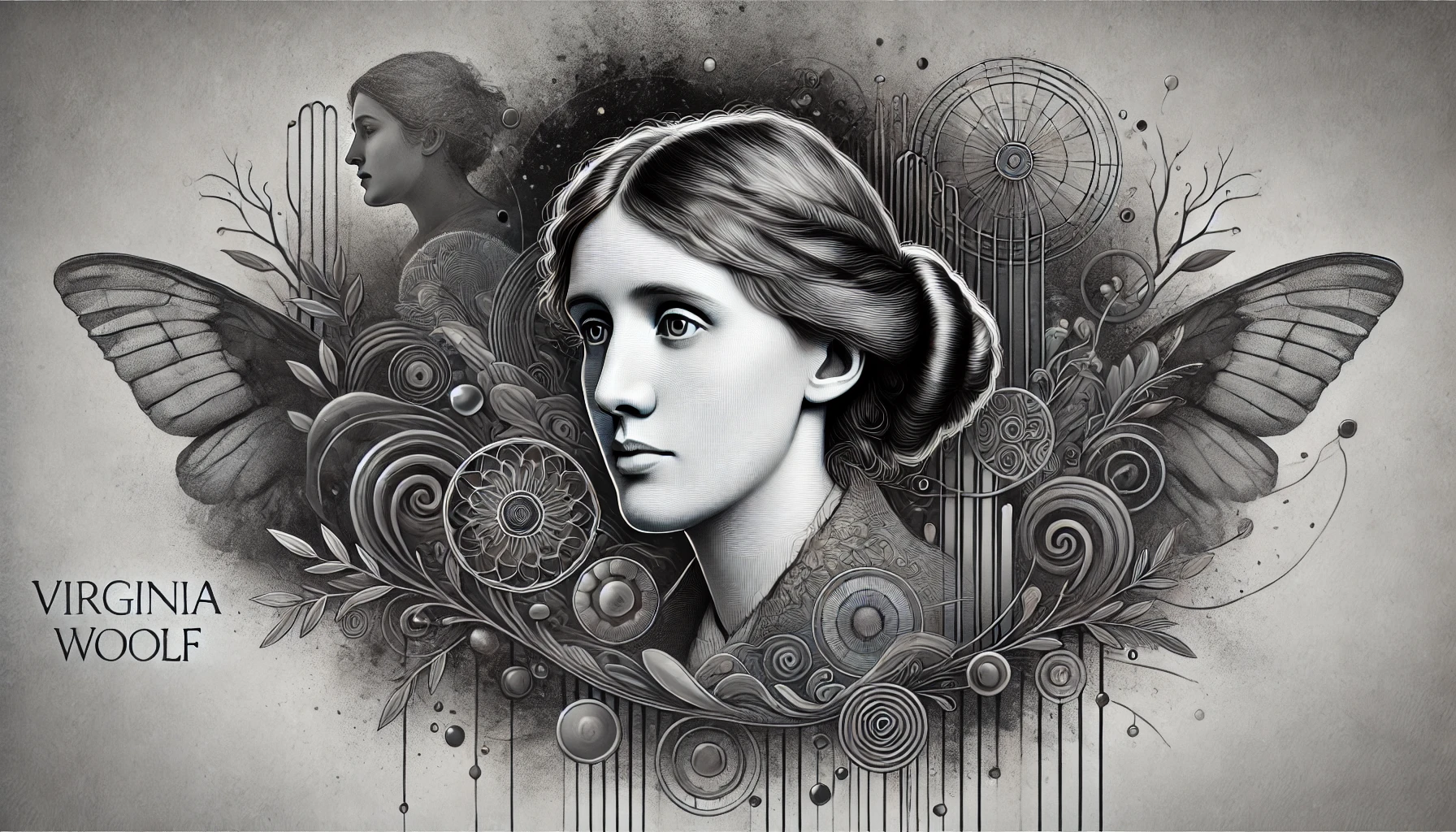Virginia Woolf, born Adeline Virginia Stephen on January 25, 1882 in London, is one of the most emblematic literary figures of the 20th century. Writer, essayist and critic, her life and work have left an indelible mark on modern literature. But behind her literary genius was a mind tormented by mental disorders, an aspect that not only influenced her work, but also humanized her before us, showing that greatness and fragility can coexist.
Childhood and Youth: A Mind in the Making
Virginia was born into a cultured and privileged family. Her father, Sir Leslie Stephen, was a famous historian and critic, while her mother, Julia Stephen, was a nurse and model for Pre-Raphaelite painters. From a young age, Virginia was exposed to a vibrant intellectual environment, which undoubtedly shaped her future as a writer. However, also from an early age, Virginia experienced bouts of depression and anxiety, exacerbated by the death of her mother in 1895 and that of her sister Stella two years later.
Modern comparison: Imagine losing two of the most important people in your life during adolescence, an already turbulent time. In modern times, this could be compared to the loss of close family members due to tragic events, a devastating blow to any young person.
Literary Ascent: Between Success and Obscurity
Virginia began her literary career writing for the Times Literary Supplement. In 1912, she married Leonard Woolf, a political theorist, and together they founded the Hogarth Press in 1917. This was a crucial step in her career, as it allowed her to publish her work and that of other innovative authors.
Notable works: Among his best-known works are Mrs. Dalloway ( 1925), To the Lighthouse ( 1927) and Orlando (1928). These novels not only stood out for their innovative narrative style and their exploration of stream-of-consciousness, but also for their deep introspection into the human psyche.
The Struggle Against Mental Illness
Throughout her life, Virginia suffered from episodes of severe depression and bipolar disorder, conditions that were not adequately understood or treated at the time. These disorders led her to experience recurrent hallucinations and nervous breakdowns. However, despite these difficulties, Virginia continued to write, using her pain and personal experiences as a source of creative inspiration.
Humor in adversity: In a letter to her sister Vanessa, Virginia wrote of her “melancholy mood,” humorously describing it as “a sadness that would make Hamlet himself pale.”
Virginia Woolf’s Lasting Legacy
Virginia Woolf left a literary legacy that continues to be studied and admired today. Her writings not only challenge literary conventions, but also offer a window into the complexities of the human mind. Her courage in tackling issues such as identity, sexuality, and mental illness has inspired countless readers and writers.
Call to Action: Virginia Woolf’s life reminds us of the importance of speaking openly about mental health and combating the associated stigma. Her story is a testament to how genius can flourish even in the most adverse conditions.
Major Works by Virginia Woolf
- Mrs. Dalloway (1925)
- To the Lighthouse (1927)
- Orlando (1928)
- A Room of One’s Own (1929)
- The Waves (1931)
- The Years (1937)
- Between Acts (1941)
NOTE: The images in this article are merely illustrative and were created with artificial intelligence.
Sources
- Woolf, Virginia. Complete Diaries. Anne Olivier Bell, Pantheon Books, 1980.
- Lee, Hermione. Virginia Woolf. Vintage Books, 1997.
- Woolf, Leonard. Diary of a Husband. Hogarth Press, 1953.
- DeSalvo, Louise. Virginia Woolf: The Fragile and Brilliant Mind of a Literary Genius. Ballantine Books, 1989.






